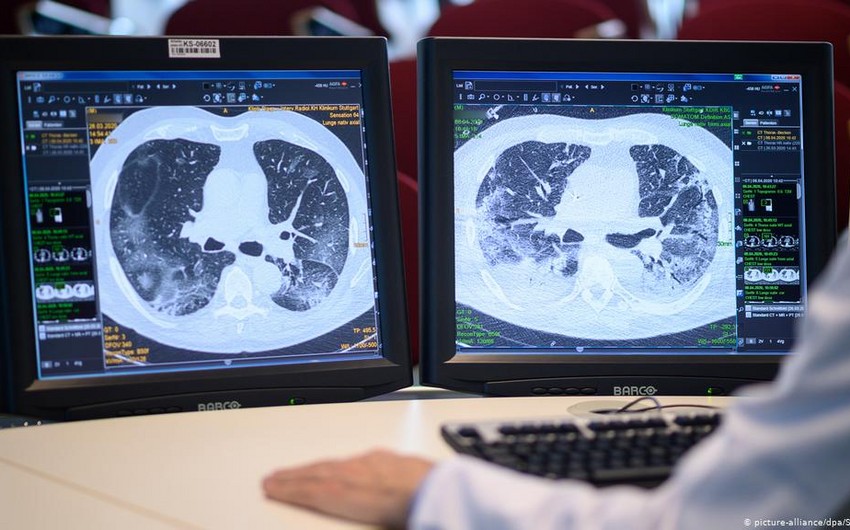Viral buildup in the lungs is the likely driver behind the steep mortality rates seen in the COVID-19 pandemic, according to a study published on Aug. 31, Report informs referring to CNBC.
The researchers at New York University (NYU) Grossman School of Medicine, US, showed that people who died of COVID-19 had on average 10 times the amount of virus in their lower airways as did severely ill patients who survived their illness.
They collected bacterial and fungal samples from the lungs of 589 men and women who were hospitalized in the US, all of whom required mechanical ventilation.
For a subset of 142 patients who also received a bronchoscopy procedure to clear their air passages, the researchers analyzed the amount of virus within their lower airways and identified the microbes present by studying small pieces of the germs’ genetic code.
They also surveyed the type of immune cells and compounds located in the lower airways.
The study revealed that those who died had on average 50 percent lower production of a type of immune chemical that targets the coronavirus compared with the COVID-19 patients who survived the illness.
These customized proteins are part of the body’s adaptive immune system, a subset of cells and chemicals that ‘remember’ invading newly encountered microbes, leaving the body better prepared for future exposure.
The finding, published in the journal Nature Microbiology, contradicts previous theories that simultaneous infections, such as bacterial pneumonia or overreaction of the body’s immune defense system, played significant roles in the heightened risk of death.
The researchers found no evidence implicating a secondary bacterial infection as the cause of the deaths. However, they cautioned that this might be due to the frequent course of antibiotics given to critically ill patients.
The researchers noted that current guidelines from the Centers for Disease Control and Prevention do not encourage the use of antivirals such as remdesivir for severely ill patients on mechanical ventilation.
However, the study results suggest that these medications may remain a valuable tool in treating these patients, they noted.


 https://static.report.az/photo/15654be0-a885-372b-9bad-ac94f0538076.jpg
https://static.report.az/photo/15654be0-a885-372b-9bad-ac94f0538076.jpg

